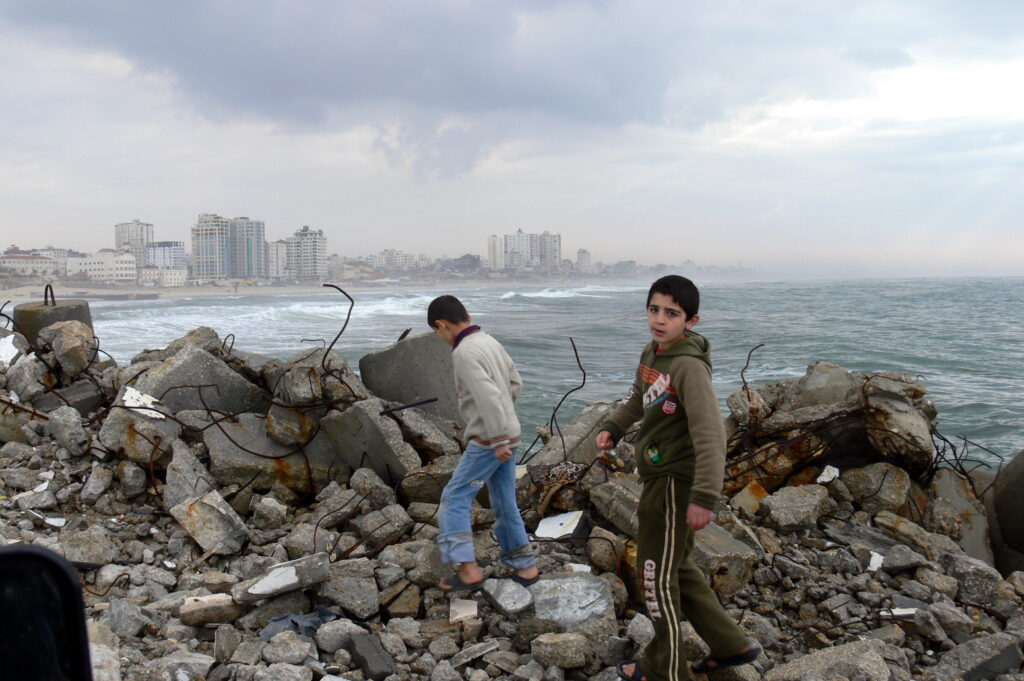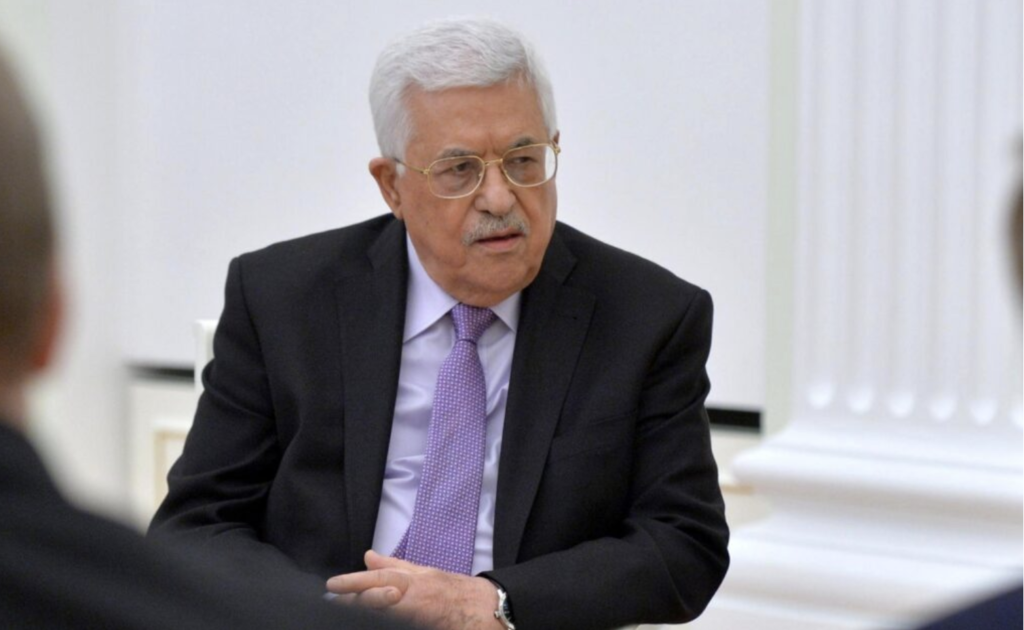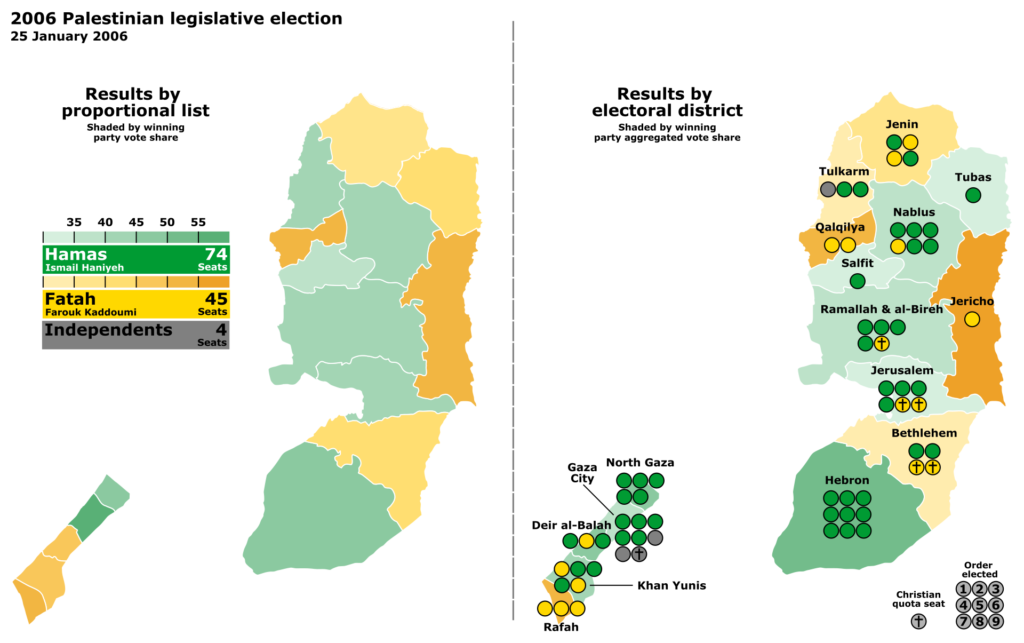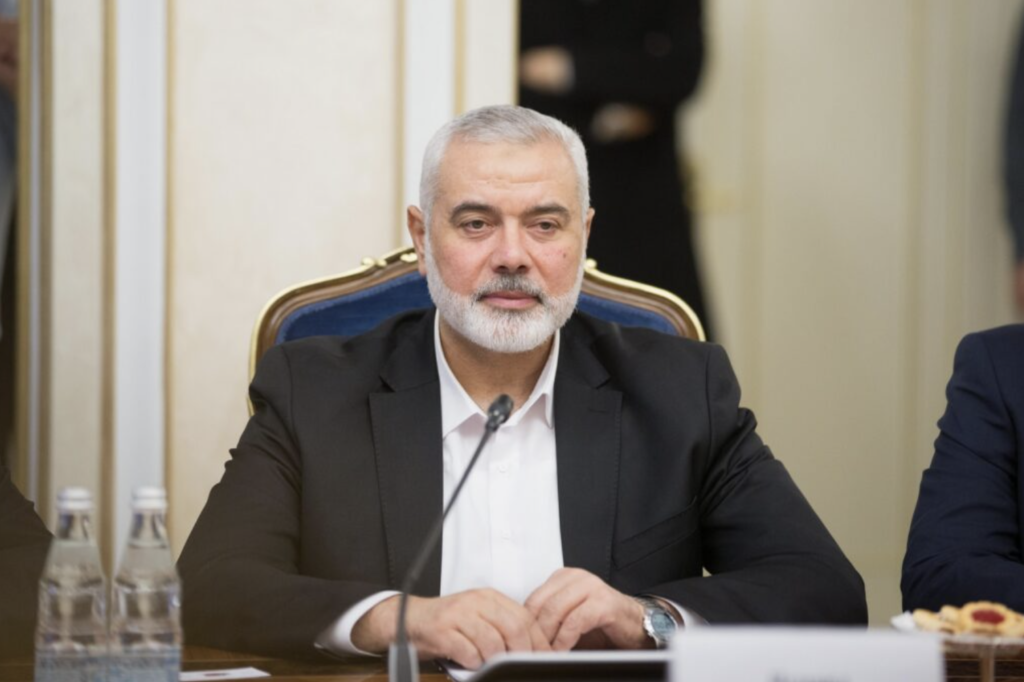Reconciliation in China? The History Fatah-Hamas Conflict

By Liam Nagle / Arab America Contributing Writer
After the Oslo Accords of the mid-1990s, a single Palestinian government under the Fatah party had control of the West Bank and Gaza Strip. But when Hamas won the Palestinian elections in 2006, a power struggle ensued – resulting in Palestinian infighting, and the separation of the Gaza Strip and West Bank governments. Now, amid the War in Gaza, Hamas and Fatah have signed a reconciliation in Beijing. The exact details of this agreement remain unclear, but its ramifications could be enormous. Given this new reconciliation, what is the history of the Fatah-Hamas Conflict?
Pre-Election Background

The history of the Palestinian government can be traced back to the Oslo Accords of 1993 and 1995. The two participants in these accords were the Israeli government and the Palestine Liberation Organization, or PLO, under Yasser Arafat. The Oslo Accords stipulated that the PLO would be permitted to form a Palestinian government – called the Palestinian Authority – which would have partial control over the West Bank and Gaza Strip. Intended as a temporary administration before further talks between the two sides could be held, the Palestinian Authority was given at least nominal control over urban and rural areas of the West Bank and Gaza Strip, while roads between these areas would be under Israeli control.
The Palestinian Authority would host its first series of elections in 1996, with the Fatah Party winning the majority of seats. Fatah, formally known as the Palestine National Liberation Movement, was by far the most major faction within the PLO before the Oslo Accords. Led by Yasser Arafat, it had pursued militant action against the Israeli state and its allies since the late 1960s. However, after being expelled from Lebanon in 1982, the organization moved to Tunisia and took on a more reconciliatory tone – eventually leading to the Oslo Accords. For Palestinians, these moves towards reconciliation were very controversial – although a Palestinian administration was formed, it had severe limits placed on it by the Israeli government. In addition, Israeli settlements continued to expand in the Gaza Strip and West Bank, further undermining the Palestinian Authority. As such, faith in Fatah – while strong for now – was on the decline.
Hamas, at first glance, can be seen as a newer organization formed in 1987. However, its roots lay in Egypt’s Muslim Brotherhood, which had been working to gain influence amongst Palestinians since the 1950s. Refusing to join the PLO alongside Fatah and its allies, it was a main contender to the PLO’s dominance in the Palestine liberation movement. In 1987, the Muslim Brotherhood here rebranded itself as Hamas in the wake of the First Intifada. Through the 1990s and into the 2000s, in spite of the Oslo Accords, Hamas continued to conduct attacks against Israel.
The 2006 Elections

As Fatah’s influence waned, Hamas’ membership continued to grow. The failure of the Camp David Summits to create an official Palestinian state was cited as a primary reason that many abandoned Fatah – and the PLO in general – in favor of Hamas. After Yasser Arafat died in late 2004, and Mahmoud Abbas’ assumption of power as Arafat’s successor, new elections were to be held in 2005 and 2006.
But Fatah’s popularity continued to wane during this time. Younger members such as Mohammed Dahlan and Marwan Barghouti leveled allegations of corruption against the Fatah leadership, almost fracturing the Fatah Party until the two sides were able to temporarily reconcile. Hamas, meanwhile, participated in these elections and seemed to be a popular force – and the elections reflected this. The final results of the elections resulted in a win for Hamas, which won 44.45% of the vote and 74 out of 132 seats, followed by Fatah which won 41.43% of the vote and 45 out of 132 seats. Fatah under Abbas refused to participate in a Hamas-led cabinet, instead preferring to sit in opposition. The new Hamas-led government selected its new prime minister, Ismail Haniya, while Mahmoud Abbas remained president.
The Conflict

While Haniya formed its cabinet in the Palestinian Authority, political violence between Fatah and Hamas supporters erupted. In addition, portions of the Palestinian security forces refused to listen to orders issued by the Hamas-led government, with the government simultaneously creating its own “Executive Force” loyal to the prime minister and his cabinet. Pro-Fatah and pro-Hamas gunmen attacked one another, and rallies held in support for one side would sometimes be fired on by the security forces of the other. Attempts to rectify the situation through the 2007 Fatah-Hamas Mecca Agreement got both sides to sign the agreement, resulting in Fatah re-joining the government and having its own cabinet ministers under Haniyeh – but this new joint government was short-lived.
In June 2007, just months after a new joint government was formed, Hamas and Fatah engaged in battles over control of the Gaza Strip. Hamas seemed convinced that Fatah had been planning a takeover of the strip and sought to preemptively thwart this by taking it first. Further battles erupted between both sides for control of the strip, with the prime minister’s pro-Hamas Executive Force battling the pro-Fatah Palestinian Security Services. After a few days, Hamas would emerge victorious; it took over the Gaza Strip, kicking out its Fatah officials.
Aftermath and Reconciliation
Mahmoud Abbas responded by declaring a state of emergency and dismissing the new joint government and Haniyeh, instead appointing a Fatah official as prime minister while indefinitely suspending Palestinian elections. As such, the Gaza Strip was now under the control of Hamas, while the West Bank was under the control of the pro-Fatah Palestinian Authority. Since then, both sides have signed numerous agreements on reconciliation, but without any tangible progress. Despite such signings, both sides have a somewhat hostile attitude towards each other, with Fatah accusing Hamas of not representing the Palestinian people, and Hamas claiming Fatah was supporting Israel in Gaza.
It’s unclear whether or not the reconciliation between the two sides in China will achieve much. So far, the details of the agreement remain relatively vague. It appears that both Fatah and Hamas have agreed to form a unified government between their two factions, but no concrete timeline or steps were given on how this was to be done. Additionally, Chinese Foreign Minister Wang Yi stated that, “The core outcome is that the PLO is the sole legitimate representative of the Palestinian people.” Given that Hamas has never joined the PLO, we don’t know what exactly this entails for Hamas. It’s possible that the agreement could fail like so many others had before, but it could also be that Israel’s War in Gaza could be leaving Hamas desperate for allies. Whatever the case may be, Fatah and Hamas will have to overcome several decades worth of bad blood between their two organizations if they truly are dedicated to reconciliation.
Check out our blog here!








